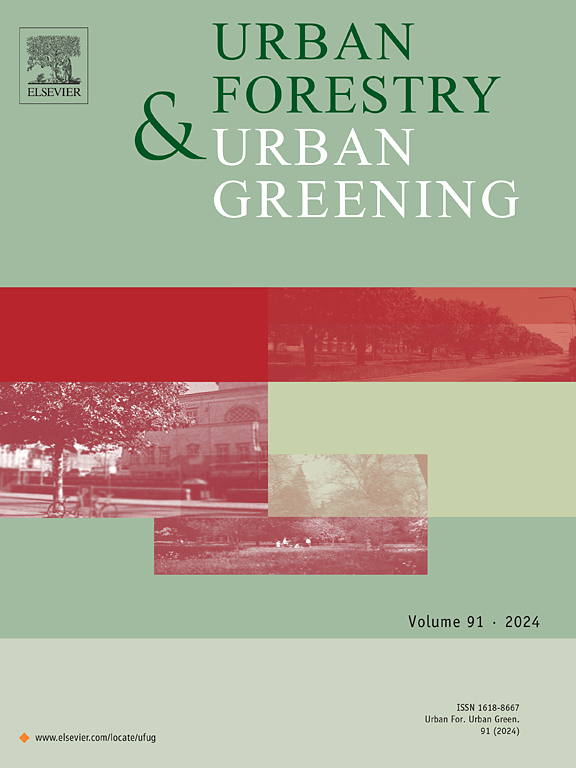The role of urban trees as nature-based solutions for stormwater runoff control
IF 6.7
2区 环境科学与生态学
Q1 ENVIRONMENTAL STUDIES
引用次数: 0
Abstract
The soil cover of urban areas drastically reduces infiltration rates and increases the risk of stormwater flooding. In this context, nature-based solutions (NBS) are well-acknowledged strategies for sustainable stormwater management and water cycle restoration. As NBS, urban trees provide significant benefits to hydrological balance through rainfall interception, evapotranspiration, and water storage in the underlying soil. This paper proposes an analytical-probabilistic model to evaluate the performance of urban trees for stormwater control. The study investigates the effects on the surface runoff of the main hydrological and environmental variables involved, in particular the infiltration rate into the soil, and the impermeable contributing areas. The reliability of the analytical-probabilistic approach to estimate the surface stormwater runoff (in terms of both runoff probability and average value) was validated through its application to a case study in the city of Lecco (Italy). The results confirmed that the beneficial impact of urban trees on stormwater control is greater during leaf-on season (late spring-summer at Lecco latitude) and when a proper infiltration rate into the soil beneath the tree is ensured.
城市树木作为基于自然的雨水径流控制解决方案的作用
城市地区的土壤覆盖率大大降低了渗透率,增加了暴雨洪水的风险。在这种情况下,基于自然的解决方案(NBS)是公认的可持续雨水管理和水循环恢复战略。作为 NBS,城市树木通过拦截降雨、蒸发蒸腾和在下层土壤中蓄水,为水文平衡带来了巨大的好处。本文提出了一个分析-概率模型来评估城市树木在雨水控制方面的性能。研究调查了相关主要水文和环境变量对地表径流的影响,特别是对土壤的渗透率和不渗透区域。通过对意大利莱科市的案例研究,验证了分析-概率法估算地表雨水径流(径流概率和平均值)的可靠性。研究结果证实,城市树木在落叶季节(莱科纬度地区的春末夏初)对雨水控制的有利影响更大,而且能确保树木下的土壤有适当的渗透率。
本文章由计算机程序翻译,如有差异,请以英文原文为准。
求助全文
约1分钟内获得全文
求助全文
来源期刊

Urban Forestry & Urban Greening
FORESTRY-
CiteScore
11.70
自引率
12.50%
发文量
289
审稿时长
70 days
期刊介绍:
Urban Forestry and Urban Greening is a refereed, international journal aimed at presenting high-quality research with urban and peri-urban woody and non-woody vegetation and its use, planning, design, establishment and management as its main topics. Urban Forestry and Urban Greening concentrates on all tree-dominated (as joint together in the urban forest) as well as other green resources in and around urban areas, such as woodlands, public and private urban parks and gardens, urban nature areas, street tree and square plantations, botanical gardens and cemeteries.
The journal welcomes basic and applied research papers, as well as review papers and short communications. Contributions should focus on one or more of the following aspects:
-Form and functions of urban forests and other vegetation, including aspects of urban ecology.
-Policy-making, planning and design related to urban forests and other vegetation.
-Selection and establishment of tree resources and other vegetation for urban environments.
-Management of urban forests and other vegetation.
Original contributions of a high academic standard are invited from a wide range of disciplines and fields, including forestry, biology, horticulture, arboriculture, landscape ecology, pathology, soil science, hydrology, landscape architecture, landscape planning, urban planning and design, economics, sociology, environmental psychology, public health, and education.
 求助内容:
求助内容: 应助结果提醒方式:
应助结果提醒方式:


